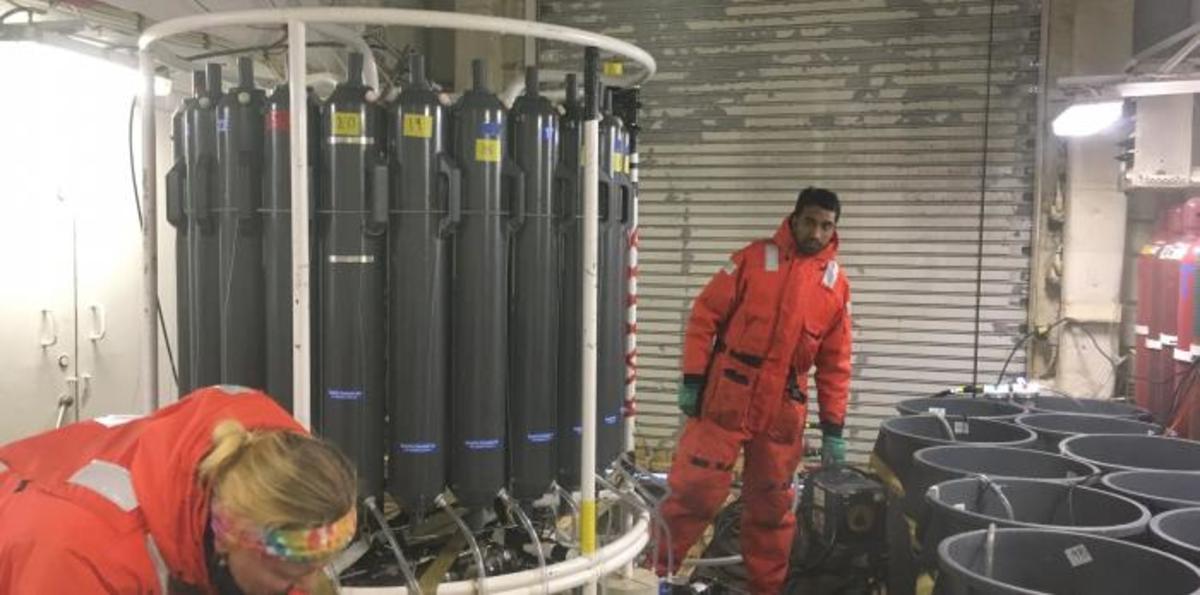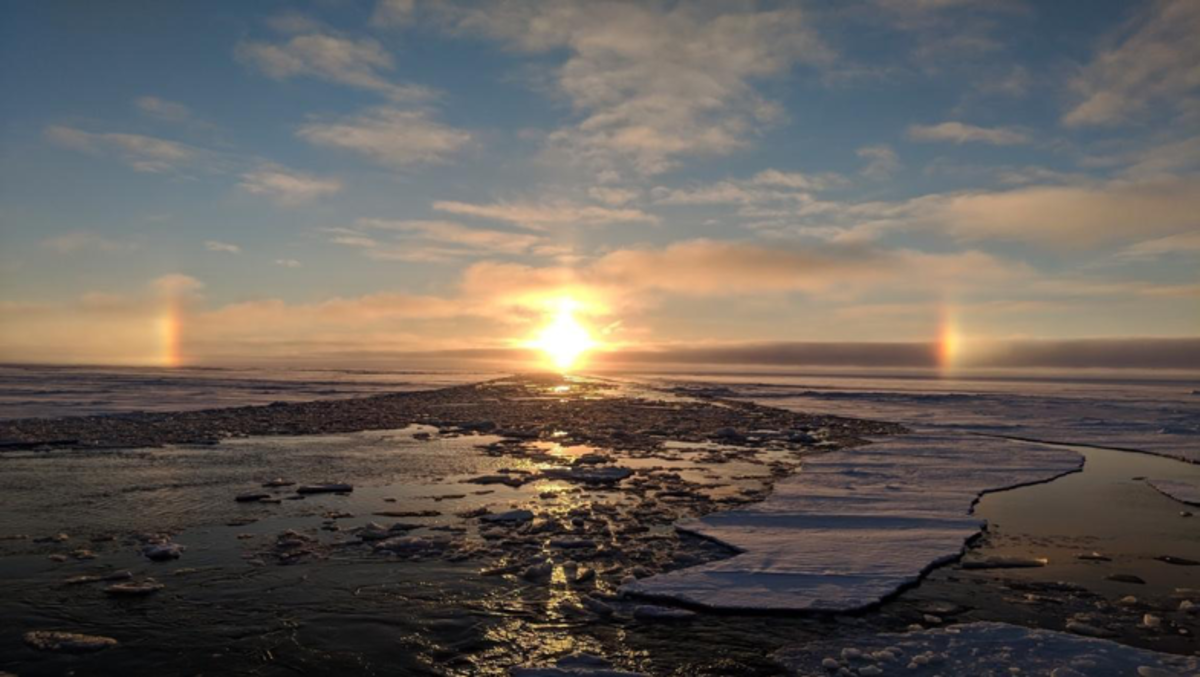PAOC Spotlights
The Story of a Numerical Modeler Wandering into the Arctic

It all started with an email:
‘Urgent: Help needed for a research cruise in the Arctic ocean. No prior experience required’.
The message had been sent to my department’s mailing list and described a month-long research opportunity to conduct oceanographic field work along the coast of Alaska. I read the email with a feeling of awe. Images of polar bears and ice-covered landscapes took over my mind. I had spent three years behind a computer, numerically simulating the world’s oceans, and this was finally my chance to experience it for real! How exciting!
 Deciding to go, however, was not such an easy decision to make. Could I really survive the rough seas, the frigid temperature and the intense work schedule? After all, even a summertime whale-watching trip off Boston harbor had left me badly shaken from sea sickness. Several days passed, during which I swung back and forth between yes and no. Ultimately, a spark of courage (or foolishness) took over me, and I replied: I’m in!
Deciding to go, however, was not such an easy decision to make. Could I really survive the rough seas, the frigid temperature and the intense work schedule? After all, even a summertime whale-watching trip off Boston harbor had left me badly shaken from sea sickness. Several days passed, during which I swung back and forth between yes and no. Ultimately, a spark of courage (or foolishness) took over me, and I replied: I’m in!
The departure date finally arrived on a cold October morning. I stood outside my home with a suitcase packed with essentials, including five pairs of gloves, dried apricots and a load of dark Belgian chocolates from Trader Joe’s. Three flights and two days later, we (the science party) arrived at a port on a beautiful island at the tip of Alaska. We spent a day there hiking the unique landscape made of volcanic rock and trudging through a thick layer of colorful shrubs. While driving to the coast, we were welcomed by a pack (or a ‘convocation’, as it is formally called) of bald eagles casually perched along the roadside. This was the first of many incredible photo ops of the trip!
Our icebreaker ship was already stationed at the port and the coastguard crew was waiting for us to board. As I stepped onto the ship, I felt anxious about this large hunk of metal being my home for the next month. This feeling quickly subsided, however, when I saw how welcoming the crew were to us. Everyone was helping each other to get ready for the big mission, and despite the stress, there was a lot of excitement, bonding, and sense of community.
We set sail the next day, and within a couple of hours were hit by powerful winds that generated whopping 10-15 feet waves. Everything was moving inside. Drawers were flinging open, chairs were rolling around uncontrollably, and it was nearly impossible to walk in a straight line. For my first sea experience, I was certainly not being eased in! Fortunately, the ship was built to handle strong waves, and the motion sickness medicines were working well. After a day, I was quite used to the constant rocking and even enjoyed its lulling effect at night. We sailed north in these rough seas for about four days, before crossing the Arctic circle. From that point, we started seeing pockets of thin ice blanketing the ocean surface. The presence of sea ice substantially decreased the size of the waves, and to my relief, it was smooth sailing from then on.

Sun dog phenomenon. (Credit: Matt K.)
The science began in earnest. There were several subgroups within the science party, each tasked with exploring a particular aspect of the Arctic, be it the physical structure of the currents, the chemistry or the biology occurring in this region. The aim of my allotted project was to collect radium samples in the water. Despite its very low concentrations, the measurement of oceanic radium can provide very useful data. Indeed, its radioactive decay acts like a clock, which tells us how quickly the Arctic is evolving in response to climate change. Practically speaking, these experiments required collecting hundreds of liters of water a day and patiently filtering it to collect the sparse radium. The challenging environment implied long hours of work, very irregular schedules (day/night) and many changes of plans.
The rewards, however, were unparalleled. Over the course of the month, we were lucky enough to see all the top items on the wish list: a polar bear, an aurora and a sun dog (see photo below). For me, that was worth all the effort and more. Seeing the sun dog in particular was incredible! Due to the low sun angle and the presence of ice crystals in the atmosphere, two bright spots appeared on either side of the sun, almost forming a lens around it. It was such an unusual phenomenon that, to me, it felt like being a kid again and watching snow fall for the first time. More than anything, that moment validated my decision to come and kept me motivated for the rest of the trip.
Three months after the expedition, I reflect back on the experience. Stepping outside my comfort zone was certainly nerve-wracking at times, but it was also a thrilling learning opportunity. Moreover, it made me realize that most people around me had the same concerns as I did. I remember visiting the doctor on board the first day, worried that I wouldn’t be able to cope with motion sickness. She gave me the medicine and said: ‘Don’t be ashamed to take them. Even after 10 years on the job, I still take one dose every day.’ She then added cheekily: ‘We’re all in the same boat.’
Story Image: Mukund helping sample on the Healy. (Credit: Gianluca Meneghello)